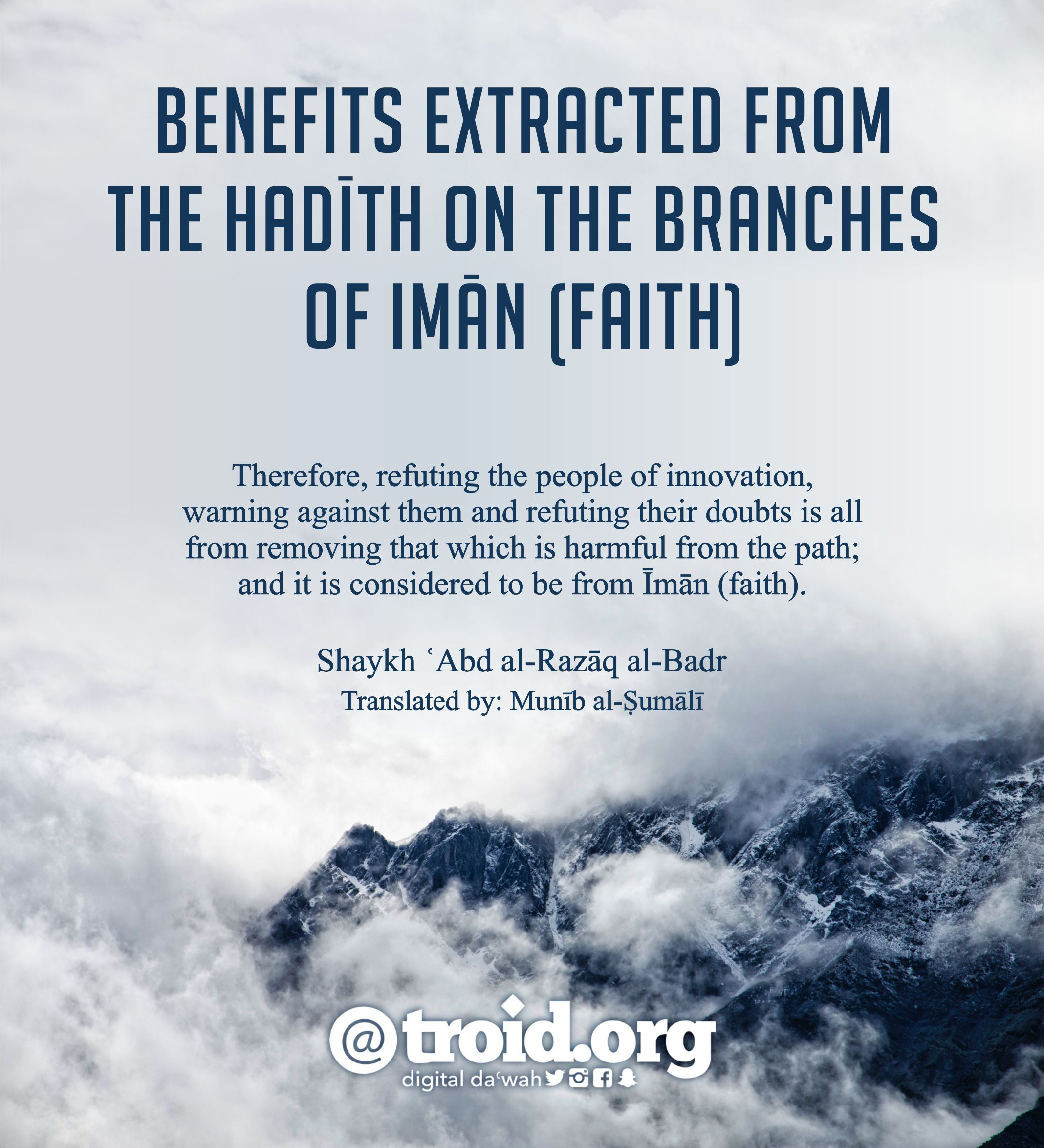Īmān has seventy odd or sixty odd branches, the highest of them is the testimony of faith, Lā ilāh illa Allāh [their is no deity worthy of worship in truth except Allāh], and the lowest of them is removing that which is harmful from the path; modesty is a branch from the branches of īmān (faith). [Ṣaḥīḥ al-Bukhārī 9, Ṣaḥīḥ Muslim 35]
Benefits Extracted from the Ḥadīth on the Branches of Īmān (Faith)
Shaykh ʿAbd al-Razāq al-Badr


Shaykh ʿAbd al-Razāq ibn ʿAbd al-Muḥsin al-Badr mentioned explaining the statement of the Messenger of Allāh (ṣallá Allāhu ʿalayhi wa sallam):
There are many benefits which can be extracted from this ḥadīth. Some of these benefits are:
- A clear proof that īmān consists of that which takes place in the heart, on the tongue and the limbs. As for that which takes place in the heart [i.e. from the actions of the heart], it is found in his statement (ṣallá Allāh ʿalayhi wa sallam): modesty is a branch from the branches of faith. That which takes place on the tongue is found in his statement (ṣallá Allāh ʿalayhi wa sallam): the highest of them is the testimony of faith, Lā ilāh illa Allāh. That which takes place on the limbs is found in his statement (ṣallá Allāh ʿalayhi wa sallam): the lowest of them is removing that which is harmful from the path.
- The superiority of the testimony of faith and that it is the best statement. This is why the Prophet (ṣallá Allāhu ʿalayhi wa-sallam) regarded it to be the highest branch from the branches of faith.
- The branches of faith are not on the same level, rather they all vary. The highest of them is the testimony of faith and the lowest of them is removing that which is harmful from the path. In between them, there are many other branches. There are branches which are closer to the highest branch and others which are closer to the lowest branch….The people are divided into three categories with regards to removing that which is harmful from the path.
1) Those who remove that which is harmful from the path
2) Those who discard removing that which is harmful from the path
3) Those who place that which is harmful upon the pathAll of these three categories of people are from the people of īmān, but they are not equal.
There is also a very beautiful benefit in this narration, it is that the Messenger of Allāh (ṣallá Allāhu ʿalayhi wa-sallam) considered the removal of that which is harmful from the path as an act of faith. The meaning of, “that which is harmful” is something tangible which harms and hinders the people from their course of achieving their worldly interests. Likewise, with all the more reason, removing that which is harmful from the path also means: removing that which hinders the people from their path towards the obedience of their lord, and this is also considered an act of faith.
Therefore, refuting the people of innovation, warning against them and refuting their doubts is all from removing that which is harmful from the path; and it is considered to be from Īmān (faith).
Source: تذكرة المؤتسي شرح عقيدة الحافظ عبد الغني المقدسي pg.307-308
Translated by: Munīb al-Ṣumālī

Most Popular: Last 30 Days















